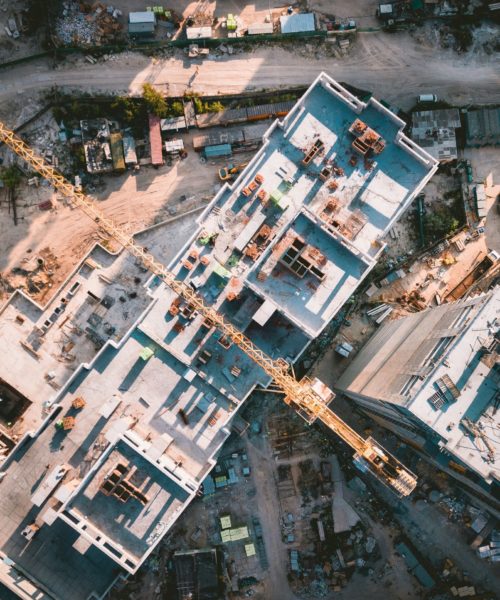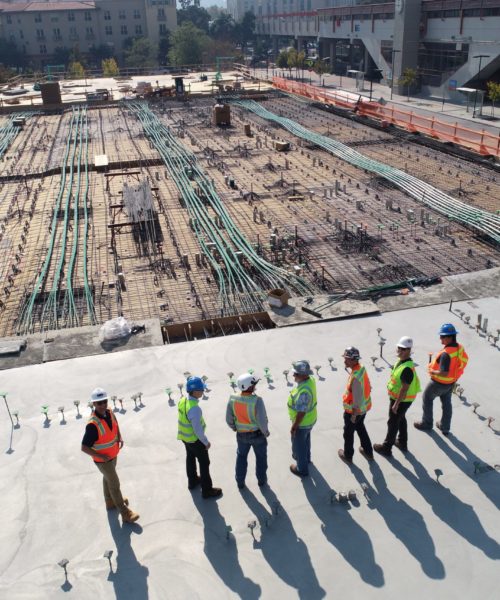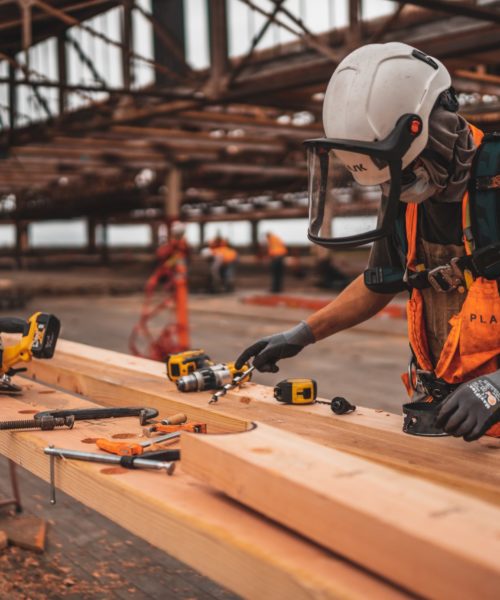



Construction sites pose a wide range of risks, such as falls from scaffolding and ladders, collapse of trenches, falling debris, and injuries resulting from defective tools and equipment, among many others. Other industrial settings, such as manufacturing facilities, mills, utilities, and agricultural or logging operations, pose similar types of risks.
Despite numerous federal, state and local laws regulating workplace safety, including the federal OSHA program (Occupational Safety and Health Act), and Oregon’s Employer Liability Law (ELL) and Safe Employment Act (OSEA), serious injuries are all too common.

Oregon Safe Employment Act
The Oregon Safe Employment Act (OSEA) sets forth standards applicable to all employers, not just work involving risk or danger. When an injury occurs, these standards are considered in determining whether an employer satisfied the relevant standard of care. Significantly, the OSEA requires employers and owners to comply with all of the numerous safety rules, orders and other requirements established by Oregon OSHA.
When companies fail to provide appropriate safety measures, or when defective products and equipment are used on the jobsite, the result can be serious, and sometimes fatal, injuries. Damages for injuries can be recovered from the responsible parties, depending on their role in causing or failing to prevent an injury. Potential parties include: direct and indirect employers, subcontractors, equipment manufacturers, material suppliers, design professionals, and engineers, among others.
Overlap With Workers Compensation
Claims against an employer often are subject to the workers compensation system. While this system provides medical care and a portion of lost wages or a small death benefit, it rarely covers the full measure of damage to an injured worker and his/her family.
However, sometimes there are third parties–in other words, persons or entities besides the employer–who share responsibility for worker injuries, and your claims against these parties are not limited by the workers compensation system. We work to obtain full compensation for your injuries, through legal exceptions to the workers compensation system, and by pursuing claims against third parties who share responsibility for your injuries.
Full compensation in third party cases includes recovery for:
- medical expenses (past and future);
- lost wages;
- loss of future earning potential; and
- pain and suffering.
Rob was wonderful from day one. He was very supportive. I didn’t know what to expect, but Rob was reassuring, very caring, he kept telling me it would take time, and not to give up hope.
He made me feel like I was important, he was genuine, compassionate, able to put his feet in other people’s shoes. He was almost like a family member.
Eyvonne Harris

Liability for Construction Worker Injuries
Portland’s building boom reflects the demand for residential and commercial growth in the vibrant Pacific Northwest. Development in the south and east communities, like Milwaukie, Happy Valley, and Gresham, has significantly expanded the area’s urban footprint and added much-needed housing units.
Although it has slowed from the full-speed-ahead building boom of the past decade, construction remains Oregon’s third-fastest-growing industry. Sadly, the volume and speed of new construction can have unfortunate consequences. Oregon’s construction industry’s non‐fatal work‐related injury and illness rate was nearly 1.6 times higher than the national average in 2019.
Workers' Compensation and Oregon's Employer Liability Law
Construction sites contain many dangers, including working at heights, moving objects, hazardous materials, heavy equipment, and unstable surfaces. A site specific safety plan is designed to maintain a safe environment by identifying the potential hazards at the work site and describing all company policies, controls and work practices selected to minimize hazards. Implementing the plan and providing appropriate training, supervision, and equipment can significantly reduce workplace injuries.
Workers’ compensation is your primary remedy if you are an employee who is injured on the job. Workers’ compensation pays your medical expenses and reimburses you for lost wages. However, it does not compensate you for non-economic damages like pain and suffering, and it may not pay enough to cover your losses. Unfortunately, in most cases, the workers’ compensation laws prohibit an injured employee from suing their employer to recover additional damages.
However, in many construction accidents, multiple factors besides the worker’s direct employer contribute to hazardous or unsafe situations. For example, if a worker is employed by a subcontractor, the general contractor, who is responsible for overall site safety and correctly sequencing the work of all trades, may bear partial or complete responsibility for the hazardous conditions leading to the worker’s injury. Similarly, another subcontractor on the job, who is not the worker’s direct employer, may be responsible for the unsafe conditions that led to the worker’s injury.

Oregon’s Employer Liability Law, ORS 654.305, can help injured construction workers hold these other entities that are not their direct employer responsible for the acts or omissions to led to the accident. The law requires all employers on a jobsite to use “every device, care, and precaution that is practicable . . . without regard to the additional cost” to ensure the safety of all workers on the site. The standard is beyond “reasonable care,” which is the standard in an ordinary negligence case, making it easier for an injured worker to recover.
Construction work also has long-term risks and on-the-job hazards. Workers are at risk of developing illnesses and medical issues that can take many years to develop and diagnose. These include chemical sensitivity; hearing loss; mesothelioma and other asbestos-related diseases; repetitive motion injuries like carpal tunnel syndrome; and many more. Employers must take reasonable measures to help protect workers and help workers protect themselves against these injuries and illnesses.
Maintaining a safe job site and protecting workers from unsafe working conditions can include (but is not limited to):
- Providing and requiring the use of safety equipment as appropriate (including hard hats, fall protection systems, hearing protection, respirators, gloves, goggles, etc.).
- Providing accident prevention and response training.
- Providing accessible information about workplace hazards, including MSDS sheets and information about known or potential jobsite hazards.
- Properly and adequately staffing and supervising projects.
- Regularly inspecting equipment safety features and ensuring they are not overridden or disabled.
- Properly maintaining equipment and heavy machinery.
- Complying with local and industry-standard safety rules and regulations.
- Taking steps to protect workers from environmental dangers.
- Minimizing trash, debris, and unnecessary clutter.
Oregon Safe Employment Act
The Oregon Safe Employment Act (OSEA), ORS 654.001, sets forth standards applicable to all employers, not just work involving risk or danger. When an injury occurs, these standards are considered in determining whether an employer satisfied the relevant standard of care. Significantly, the OSEA requires employers and owners to comply with all of the numerous safety rules, orders and other requirements established by Oregon OSHA.
Product Liability Claims
Sometimes, defective or malfunctioning equipment causes accidents. Scaffold and ladder collapses, crane collapses, explosions, electric shocks, and other catastrophic disasters are often traced to poorly designed or defective equipment. When this happens, injured workers may bring product liability claims against the manufacturer or producer of the defective product. These cases can involve extremely serious injuries, often resulting in significant monetary awards and penalties against manufacturers. It is important to retain an experienced attorney to pursue these types of claims.
If you are a construction worker who has been injured on the job in Oregon, or if you suffer from an illness or disability caused by your work, contact Rob Kline Personal Injury Lawyer Officers Our team will fight for your rights and explore all options to help you recover the compensation you deserve.
Let Rob Kline Stand for You

If you or a loved one has been injured in a construction or industrial accident, it is important to act quickly. Critical evidence can be lost or destroyed unless an investigation is performed promptly. In addition, the law provides strict deadlines for bringing claims against the responsible parties.
Rob Kline is a highly experienced Portland personal injury attorney. Call today to get a free, confidential case evaluation.

